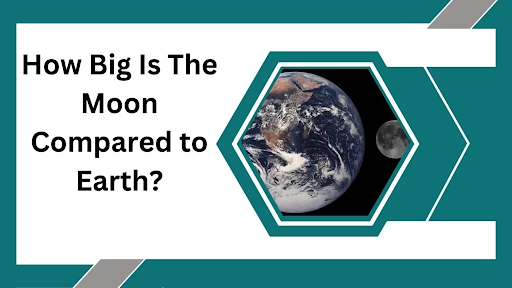The significance of the moon and Earth in the universe:
Table of Contents
The moon and Earth hold immense significance in the universe due to their roles in shaping our planet’s conditions and life as we know it:
- The Moon:
- Natural Satellite: The moon is Earth’s natural satellite, orbiting around our planet.
- Gravitational Interaction: Its gravitational pull contributes to phenomena like tides on Earth’s oceans.
- Stabilization: The moon’s presence helps stabilize Earth’s axial tilt, which is crucial for maintaining relatively stable climate conditions over long periods.
- Scientific Exploration: The moon has been a subject of scientific exploration, offering insights into the early history of the solar system and potential resources for future space endeavors.
- Cultural and Mythological Significance: The moon has played a significant role in cultural, religious, and mythological beliefs across various civilizations.
Earth:
- Home to Life: Earth is the only known planet to support life. Its unique combination of atmosphere, temperature, water, and other factors provide the conditions necessary for diverse life forms.
- Ecological Balance: Earth’s ecosystems and biodiversity are interconnected, creating a delicate balance that supports the web of life.
- Human Civilization: Earth is the birthplace and home of human civilization, providing resources and environments that have shaped human history and cultural diversity.
- Study of Planetary Systems: Studying Earth contributes to our understanding of planetary processes, climate dynamics, and the potential for habitability on other planets.
- Fragility and Preservation: Earth’s significance also underscores the importance of environmental conservation and sustainability efforts to protect its ecosystems and ensure a habitable future.
Together, the moon and Earth highlight the interconnectedness of celestial bodies in the universe and showcase the intricate relationships between astronomical phenomena, natural processes, and the emergence of life.
Significance of Size Comparison:
Understanding moon-Earth proportions is crucial in astronomy for several reasons:
- Gravitational Effects and Tidal Forces: The Moon’s gravitational pull is responsible for Earth’s ocean tides. Understanding the proportions between the Moon and Earth helps astronomers accurately predict the strength and behavior of tides, which has important implications for navigation, coastal ecosystems, and even energy generation through tidal power.
- Orbital Dynamics: The Moon’s orbit around Earth is an excellent example of celestial mechanics. Studying the proportions between the two bodies provides insights into orbital dynamics, such as gravitational interactions, orbital stability, and the effects of perturbations from other celestial bodies. This knowledge is not only important for understanding the Moon’s motion but also for predicting the behavior of artificial satellites and spacecraft around Earth.
- Earth-Moon Formation: The relative sizes and masses of the Moon and Earth are important factors in understanding their formation. The leading theory of the Moon’s origin, the Giant Impact Hypothesis, posits that a Mars-sized body collided with Earth early in its history, leading to the formation of the Moon. The proportions between the two bodies influence the outcome of such collision scenarios and help astronomers refine their understanding of the formation process.
- Eclipses: Solar and lunar eclipses occur due to the alignment of the Earth, Moon, and Sun. Understanding the proportions between these bodies is crucial for predicting and explaining the occurrence, timing, and appearance of eclipses. These events provide valuable opportunities for astronomers to study the properties of the Sun, Moon, and Earth’s atmosphere.
- Planetary Habitability: The Moon plays a role in stabilizing Earth’s axial tilt, which is crucial for maintaining relatively stable climate conditions over long periods. By studying the proportions and interactions between the Moon and Earth, astronomers can better understand the factors that contribute to a planet’s habitability and long-term climate stability.
- Astronomical Scales and Distances: The Moon is one of the closest celestial bodies to Earth, making it a useful reference for understanding astronomical scales and distances. By measuring the distance to the Moon using various methods, astronomers have been able to refine their understanding of the scale of the solar system and the universe.
- Education and Outreach: The Moon is often one of the first celestial objects observed by amateur astronomers and students. Understanding the proportions between the Moon and Earth allows educators to explain basic concepts of celestial mechanics, such as orbits, phases, and gravitational interactions, in an accessible way.
How the moon can appear smaller due to its distance from Earth?
The phenomenon of the Moon appearing smaller due to its distance from Earth is known as the “Moon Illusion.” Even though the Moon’s size doesn’t physically change, it can appear larger when it’s near the horizon and smaller when it’s higher up in the sky. This optical illusion can be quite puzzling and has led to various explanations over the years. Here’s why this happens:
- Visual Reference Points: When the Moon is near the horizon, there are often objects on the Earth’s surface, such as buildings, trees, and mountains, that we use as reference points to gauge its size. Our brain uses these objects to compare the Moon’s apparent size, making it seem larger in relation to the nearby objects.
- Atmospheric Effects: The Earth’s atmosphere acts like a lens, and its varying density can bend and scatter light. When the Moon is close to the horizon, its light has to pass through a thicker layer of the atmosphere, which can make it appear slightly distorted and larger due to the scattering of shorter wavelengths of light (blue and green) and the reddening of longer wavelengths (red and orange). This gives the Moon an “enlarged” appearance.
- Binocular Vision: When the Moon is near the horizon, we often view it through a greater distance of Earth’s atmosphere, which can create a sense of depth. Our brain processes this information in conjunction with the Moon’s position, further contributing to the illusion of increased size.
- Size-Constancy Scaling: Our brains have a tendency to “scale” objects in the sky based on our expectations of their size. When the Moon is higher in the sky, there are fewer familiar objects or visual cues for comparison. As a result, our brain perceives it as smaller because it doesn’t have the same reference points as when the Moon is on the horizon.
- Astronomical Perspective: The Moon is about 384,400 kilometers (238,855 miles) away from Earth on average. While this distance doesn’t change dramatically, its apparent size can still be influenced by Earth’s rotation and the observer’s location, leading to variations in its perceived size.
The Moon-Earth Ratio:
The Moon-Earth ratio refers to the relative sizes of the Moon and Earth. Specifically, it represents the ratio between the diameter, surface area, or volume of the Moon and the corresponding measurement of Earth. This ratio helps us understand the significant difference in size between these two celestial bodies.
Here are the approximate values for the Moon-Earth ratio in terms of diameter, surface area, and volume:
Diameter Ratio: The Moon’s diameter is about 27% that of Earth’s diameter.
Surface Area Ratio: The Moon’s surface area is roughly 7% that of Earth’s surface area.
Volume Ratio: The Moon’s volume is approximately 2% that of Earth’s volume.
These ratios highlight how much smaller the Moon is compared to Earth. The Moon’s smaller size is a key factor in its gravitational influence, its orbital dynamics around Earth, and its overall role in various astronomical phenomena.
For example, the Moon’s smaller size contributes to its weaker gravitational pull compared to Earth’s, which is why objects weigh less on the Moon’s surface. The Moon’s smaller surface area and volume also impact its ability to retain an atmosphere and support geological processes in ways that differ from Earth.
Historical Observations:
Several historical figures have made significant observations and contributions to our understanding of the sizes of the Moon and Earth. Here are a few notable individuals:
- Hipparchus (c. 190–120 BCE): An ancient Greek astronomer and mathematician, Hipparchus is known for his work in measuring the distances and sizes of celestial bodies. He made observations of lunar eclipses and was among the first to estimate the distance to the Moon based on its angular size during such events.
- Claudius Ptolemy (c. 90–168 CE): Another prominent Greek astronomer, mathematician, and geographer, Ptolemy compiled his observations and knowledge in the “Almagest.” While his estimates of the sizes of the Moon and Earth were not entirely accurate, his work laid the groundwork for later astronomers.
- Nicolaus Copernicus (1473–1543): The Polish astronomer proposed the heliocentric model of the solar system, where Earth and other planets revolve around the Sun. While Copernicus’ primary focus was on the structure of the solar system, his work indirectly influenced the understanding of the Moon’s size and Earth’s place in the cosmos.
- Isaac Newton (1643–1727): Newton’s laws of motion and universal gravitation provided a framework for understanding celestial dynamics. While he’s more known for his contributions to physics, his laws and principles have been applied to calculate the gravitational interactions between the Moon and Earth.
- Johannes Hevelius (1611–1687): A Polish-German astronomer, Hevelius created detailed lunar maps and observations of the Moon’s surface using telescopes he designed himself. His lunar atlas and observations contributed to our understanding of lunar topography.
- Jean-Baptiste Joseph Delambre (1749–1822): A French astronomer, Delambre played a key role in measuring the dimensions of the Earth. His work was part of the larger effort to establish the metric system and accurately determine the size of the Earth.
Modern Observations and Technology:
Modern technology has significantly refined our measurements of the sizes of the Moon and Earth through advancements in both observational techniques and instrumental capabilities. Here’s how this refinement has occurred:
- Laser Ranging and Radar Measurements: One of the most accurate methods of measuring the Earth-Moon distance involves bouncing lasers off retroreflectors placed on the Moon’s surface during the Apollo missions. By measuring the time it takes for the laser light to travel to the Moon and back, scientists can calculate the Earth-Moon distance with remarkable precision. Additionally, radar measurements can be used to determine the distance to the Moon by timing the round-trip travel of radio waves. These methods have provided extremely accurate measurements of the Moon’s distance from Earth, which in turn contributes to more precise calculations of the Moon’s size.
- Satellite Imaging and Photogrammetry: Satellites equipped with advanced imaging technology have enabled us to create detailed maps and models of the Earth’s surface, including its topography and features. These images can be used for photogrammetry, a technique that involves measuring distances and dimensions from photographs. By using satellite imagery, scientists can determine the Earth’s radius and circumference more accurately than historical methods relying on terrestrial measurements.
- Global Positioning System (GPS): The GPS system has revolutionized navigation and positioning by providing accurate location information. GPS relies on a network of satellites that transmit signals to receivers on Earth. By precisely timing the signals’ travel time, GPS receivers can determine their distance from multiple satellites and then triangulate their own position. This technology indirectly contributes to measuring the Earth’s size and shape.
- Satellite Gravimetry: Satellites equipped with highly sensitive instruments can measure variations in Earth’s gravitational field. These variations are caused by variations in Earth’s mass distribution, including its topography, ocean currents, and underground structures. By analyzing the data collected from these satellites, scientists can refine their understanding of Earth’s shape and size.
- Improved Computational Models: Modern supercomputers allow scientists to run complex simulations and models of Earth’s geophysical properties. These models take into account factors like Earth’s rotation, gravitational field, and topography. By comparing the predictions of these models with actual measurements obtained from various sources, scientists can fine-tune their understanding of Earth’s size and shape.
- Interferometric Synthetic Aperture Radar (InSAR): This radar technique uses satellite data to measure ground deformation with incredible precision. It has been used to monitor changes in Earth’s surface caused by natural events like earthquakes and volcanic activity. By analyzing these measurements, scientists can gain insights into Earth’s internal structures and refine their understanding of its size and composition.
- Advanced Space Telescopes: Space telescopes like the Hubble Space Telescope have provided detailed observations of the Moon and Earth from space. These observations contribute to measurements of their sizes and shapes.
In conclusion, the Moon, while seemingly prominent in our night sky, is significantly smaller than Earth when considering their respective sizes. Through the application of modern technology and refined measurement techniques, we have come to understand that the Moon’s diameter is approximately 3,474 kilometers (2,159 miles), which is about 1/4th the diameter of Earth. Its surface area is around 37.9 million square kilometers, about 1/14th that of Earth. Moreover, the Moon’s volume is roughly 2% of Earth’s volume. These comparisons emphasize the vast difference in size between our planet and its natural satellite. The Moon’s smaller dimensions are a reminder of the diverse and intricate nature of our cosmic neighborhood, sparking wonder and curiosity about the universe beyond our home planet.
FAQ
Q 1. How big is the Moon compared to the Earth?
Ans. The Moon is significantly smaller than Earth in terms of both diameter and mass. The average diameter of the Moon is approximately 3,474 kilometers (2,159 miles), which is about 27% of Earth’s average diameter, making it significantly smaller in size.
Q 2. What is the mass ratio between the Moon and Earth?
Ans. The mass of the Moon is much smaller than that of Earth. The Moon’s mass is about 1/80th (approximately 1.23%) of Earth’s mass. To put it in perspective, Earth’s mass is approximately 5.97×10^24 kg, while the Moon’s mass is approximately 7.347 x 10^22 kilograms.
Q3. How does the surface area of the Moon compare to Earth?
Ans. The surface area of the Moon is significantly smaller compared to Earth. Earth’s total surface area is about 510.1 million square kilometers (196.9 million square miles), while the Moon’s surface area is approximately 37.9 million square kilometers (14.6 million square miles). This means that the Moon’s surface area is about 7.4% of Earth’s surface area.







